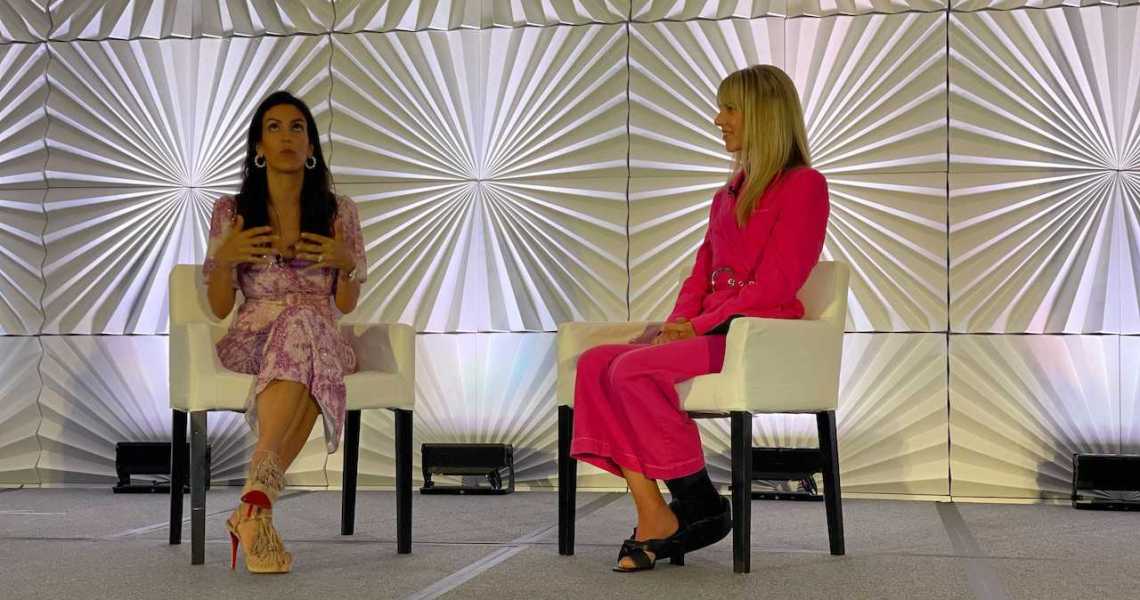At Glossy’s Future of Fashion and Luxury Summit in Naples, Florida this week, founders and executives from fashion and luxury brands came together to discuss some of the biggest challenges creating headwinds in their respective industries.
As the economy remains unpredictable and talks of a recession in the U.S. continue to guide business strategies, brands are preparing for “hard times” in the coming months. Some additional areas of concern were how to attract high-net-worth clients and how to go up — and survive — against Goliath-esque companies. Customer acquisition strategies along with marketing costs needed to retain said customers were other focus points during day one of the Glossy summit.
We gathered some highlights from attendees who dove deeper into these concerns and offered innovative solutions.
David vs. Goliath
“The best [advice] I can give for going up against larger brands is to focus on the solution you have. Larger brands become large by focusing on breadth, so they can’t specialize in the same way you can as a smaller brand. You can have an authority that they might not be able to have because they’re spread out.”
“If a larger brand tries to conquest you [running ads against keywords or editorial content related to other brands], you should just let them. They’re going to do it, because they all do, but ultimately, it’s actually a bad mark against them in metrics and they will probably stop after 30 or 60 days. Let them do that and just focus on being what you are.”
“A great thing to do with larger competitors is to steal ideas from them, but alter them to match what you do best. You want to present yourself as a comparable alternative to them, and your website needs to look like it’s a comparable alternative.”
“The difference in marketing budget can be really intimidating. When Neiman Marcus has a $300 million advertising budget, it can be hard to compete.”
Reaching high-net-worth customers
“Some of the high-net-worth clients can be very difficult to target. We had some clients that would spend $70,000 with us and didn’t even give us their home address. They’d pick up [the item] in person and want no part in us having any of their contact information. It’s a struggle.”
“This is an old-school idea, but American Express is the card of these kinds of people. With the specialized services that American Express sells, you can partner with them and get access to some of that data, because they know where these people are spending money.”
“One thing you can lean into is discretion. A lot of high-net-worth customers are kind of old school. You can lean into the human being side of it, like Neiman Marcus does. They never had a clienteling system; it was always about a real human being writing down your information in an actual book.”
“Rolex is a great model for how to market to this customer. They do a great job of it. One thing they’re keen on is sponsoring events in the high luxury space. That’s a great way to get in front of high-net-worth customers.”
Supply chain issues
“Put yourself into the conversations with your suppliers. As a founder, I’m on the phone constantly, and WeChat has been my biggest solution — just being present in those conversations, even when there are other suppliers. Going as vertical as you can certainly helps.”
“You need to adjust your calendar and add around 20 days [for shipping]. It’s the No. 1 thing I’d recommend.”
Planning for slow sales and the looming recession
“Test different things to see what’s working and see all the different ways you can maximize one solid product instead of making separate products for holidays or specific seasons. Try to stretch one product longer.”
“[If you’re looking at retail locations], try to get lease terms down to two years or find ways to get out of large fixed costs.”
“Anytime our store was going to be closed at night, we offered our space for free to similar brands. Whether we sold our product during that event [or not], just having them be in the store was free advertisement. You can reach out to the female founders’ clubs, because there’s a lot of interest. There are a lot of female brands you can tap into that would jump on the opportunity to have space and retail positioning for free.”




